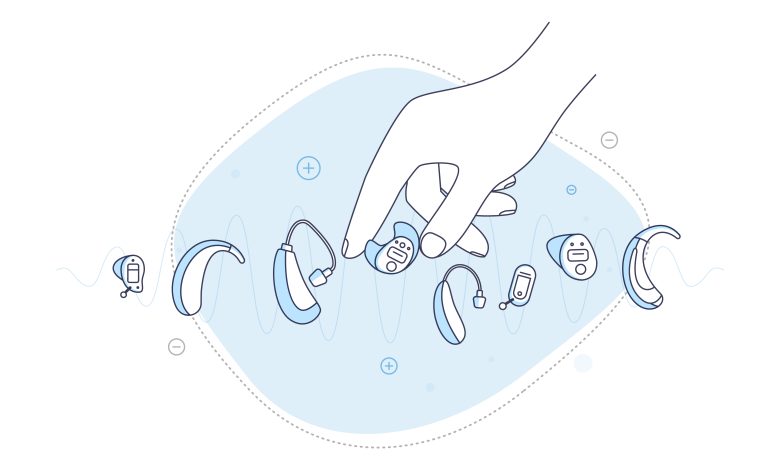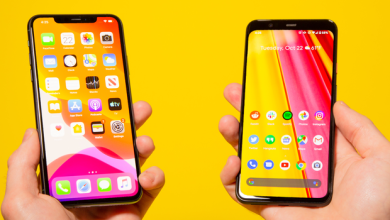Hearing aids for senior: How do it work?

What are the benefits of wearing hearing aids?
Hearing and comprehension are abilities that humans must develop to some extent. If certain high-frequency noises are no longer conveyed to the brain as a result of hearing loss, the brain progressively forgets how to perceive these sounds. It loses its ability to hear. A portion of the hearing range is gone.
Hearing aids increase the amplitude of sound by amplifying it.
A microphone picks up sound, such as music, and converts it into an electrical signal, which is then amplified by the hearing aid’s amplifier. The electrical signal is then converted into sound and conveyed into the ear by a receiver. The inner ear’s hair cells transform sound vibrations into nerve signals that the brain picks up, simulating real hearing.
If particular frequencies of sound are not conveyed to the brain, the brain eventually forgets how to comprehend them. Hearing aids can detect sounds that your brain hasn’t processed in a long time. It can take up to 12 weeks to adjust to this, depending on your hearing loss, which is why it’s critical to stick with hearing aids and communicate with your hearing care specialist if you have any issues or questions.
Hearing aids have a number of tasks, one of which is to act as a “trainer” for the brain in order to help it regain lost hearing. Soft and high-pitched tones can be heard again, allowing for the identification of distinct sounds and shades of meaning.
Early on in the hearing loss process, it is critical to use hearing aids; if your brain does not sustain this “training,” some hearing may be permanently lost.
What is the operation of contemporary hearing aids?
Hearing aids are now powerful computers that can be exactly customised to individual needs thanks to cutting-edge technology. They are not only exceedingly comfortable to wear, but they also have appealing designs. These cutting-edge medical technologies are now available at a reasonable cost.
A microphone, a processor, and a loudspeaker are usually the three major components. The microphone detects noises, also known as acoustic signals, in the surroundings and sends them to the processor. The sound is amplified and converted into electrical impulses by the processor. The signals are transmitted to the wearer’s ear through the loudspeaker, or receiver. The sound is discharged there and can be plainly heard by the wearer once more.
Hearing aids boost sounds that are crucial for communication while reducing bothersome sounds, allowing users to enjoy trouble-free hearing. In today’s hearing aids, this process is completely automated.
Why hearing aids can do more than just “up the volume”
Hearing loss entails more than simply hearing less effectively. It also implies a lack of comprehension. The tone of the noises varies, with some being more harsh and others buzzing. Certain sounds are commonly thought to be unpleasant, if not painful. Making things louder isn’t the best technique to help individuals hear better again in these situations.
Choosing the appropriate volume
Sound signal amplification technology is critical. Hearing loss limits people’s ability to hear noises above a particular volume, thus these sounds must be louder than for those with normal hearing. A noise like a police siren, on the other hand, would be intolerable if everything was anadolu yakası escort increased louder. This is why hearing aid adjustment is done to evaluate the discomfort threshold of hearing aid users. The sound level beyond which sounds are considered as unpleasant is represented by this threshold. This value is roughly 100 decibels (dB) for most persons with normal hearing, though it varies depending on the individual.
Frequency ranges and background noise
A hearing aid must amplify the exact frequencies that the wearer can no longer hear well, in addition to general volume. Digital hearing aids, which are currently state-of-the-art technology, can correct for hearing loss in a precise and targeted manner across numerous frequency ranges.
The true problem — for both humans and technology – is to eliminate background noise. Even persons with normal hearing rely on some highly intricate processing mechanisms to pick out a friend’s voice during chats in crowded restaurants, for example. In such tough settings, modern hearing aid technologies have particular features that considerably increase speech comprehension.
Modern devices also have several hearing programmes for different hearing environments, such as restaurants or listening to music, in order to cope with tough conditions. Hearing aids also offer many frequency channels, allowing the wearer to tailor sound amplification to their specific needs. Background noise and annoying feedback whistling can both be turned off.
Additional technological help
A T-loop (telecoil) or induction loop is found in several behind-the-ear models. This is beneficial during phone calls since it sends voice impulses directly from the phone to the ear. This enhances sound quality and speech comprehension greatly. Induction systems, such as those seen in meeting rooms, theatres, and churches, can be used without the usage of any additional devices when using a telecoil. Speech can now be received directly through the hearing aid while background noise is filtered away.
Bluetooth hearing aids can wirelessly receive speech and music from other Bluetooth-enabled audio devices (such as mobile phones or televisions) over short distances. A small, extra device (streamer) may be required in some circumstances to transport the signals between the devices.
There are also apps available today that can be used to control the hearing aid from a smartphone. This means that the hearing aid can be operated without the use of wires.
Our knowledgeable audiologists will gladly show you the latest models and advise you on which one is best for you.
If you’re not sure if you need a hearing aid, you might want to take advantage of our free hearing test. If the test reveals that you have a hearing problem, we recommend that you visit one of our locations or speak with your ENT doctor.
Summary
In-ear hearing aids increase sound. It’s crucial to find a hearing aid that fits your needs. Modern hearing devices can minimise background noise and feedback whistling. Consider a telecoil or Bluetooth-enabled hearing aid. Smartphone apps can operate hearing aids. Free hearing test if you’re not sure if you need a hearing aid.
Now I believe that you have some ideas about how hearing aids actually work. Continue explore yourself to more interesting articles at Posting Word. Don’t forget to share this article with your friends who might interested on this topic. Thanks for reading !
Learn more: hearing aids for senior





